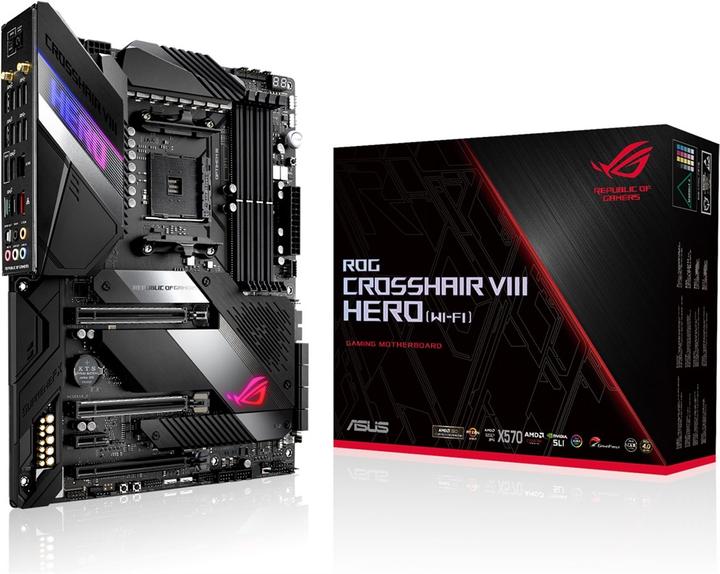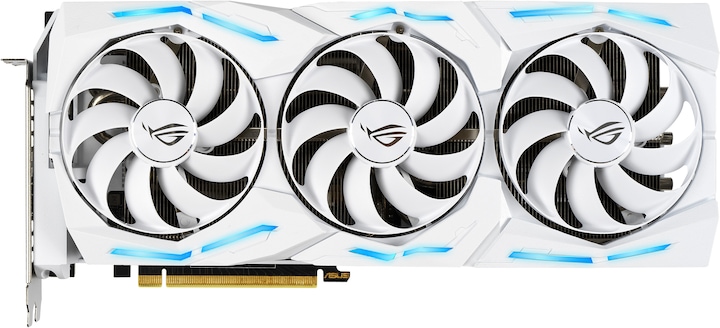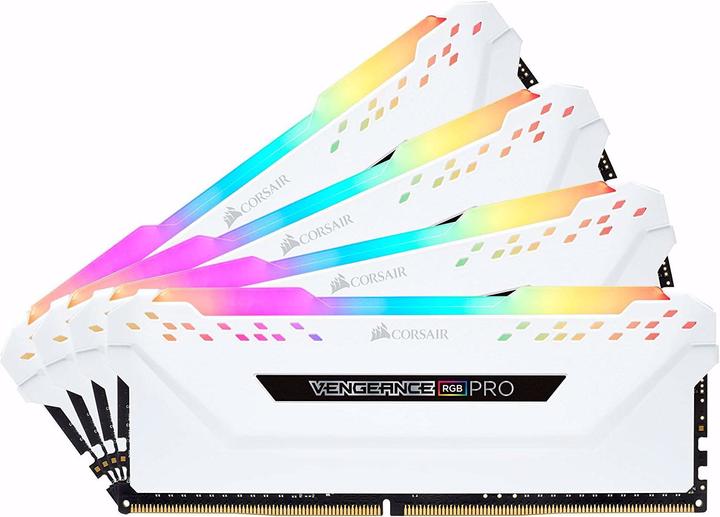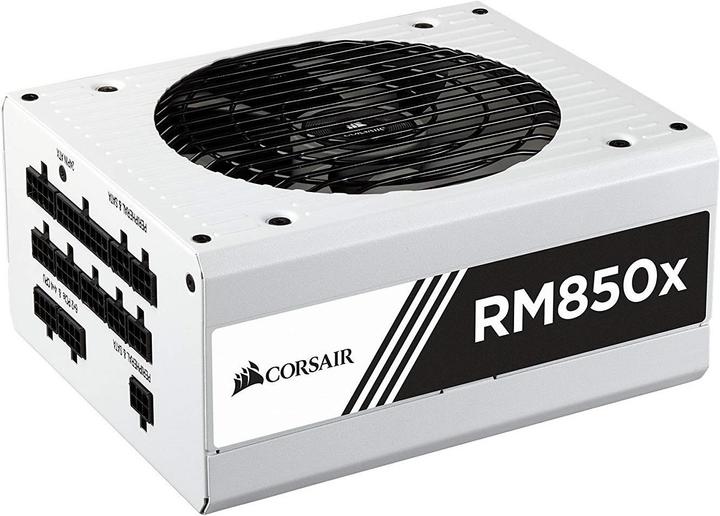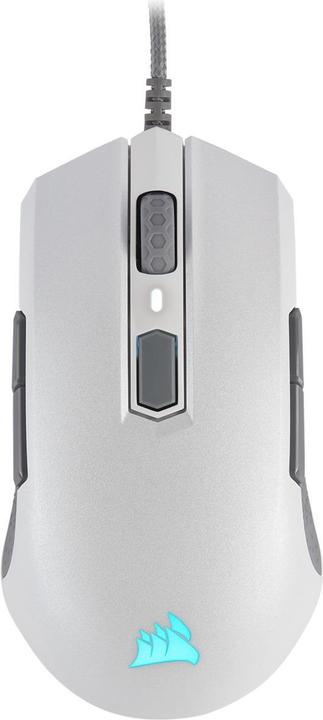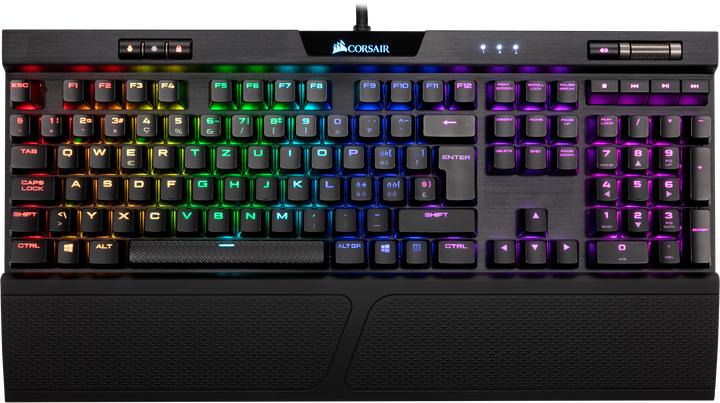

Is an exhaust fan in the PC absolutely necessary?
In the past, they were usually the only fans in a PC case: the exhaust fans. Today, many cases work with positive pressure as standard, they have more intake fans than exhaust fans. Are they still necessary with positive pressure?
Colleague Jessi recently built her first PC. On my advice, she didn't install an exhaust fan. This was met with incomprehension by some readers:
Interesting that it doesn't have an outtake fan, apparently everything is still cool but still strange.
Is the masterpiece finished ??? Not quite, the fans are still missing at the top and rear to ensure good airflow !!! That's nothing !!! :/
Does an exhaust fan really do the trick in this case or is enough hot air removed by positive pressure?
Test scenario
The most important thing about a case is the airflow, as user pdk4u6969 also writes. In other words: How efficiently is fresh, cool air transported into the case and out again? To test how good the airflow is in Jessi's PC, I use a similar test method to my case reviews. I subject the components to the two stress tests HeavyLoad (for the CPU) and FurMark (for the GPU) for 20 minutes. As a reminder, here are the installed components:
I measure the temperature with two thermometers. I use one to keep an eye on the ambient temperature in front of the PC and the other I place in the case with the sensor at the height of the CPU. I also monitor the temperature of the CPU, GPU, mainboard, RAM, SSD and chipset with the HWiNFO64 tool. I initially use the five fans at the front of the case and set them to maximum power in iCue. After the first run with the five fans at the front, I connect an exhaust fan at the back and run the test again with maximum fan power.
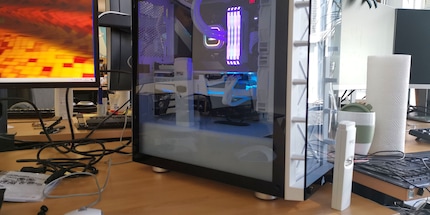
After every two minutes, I note the temperatures. Between the two tests, I switch off the system and let it cool down to room temperature.
The results
The ambient temperature during the first run was between 23.5 and 23.9 degrees Celsius. In the second run, it was 23.5 and 24.1 degrees Celsius. The graphics with the other data:
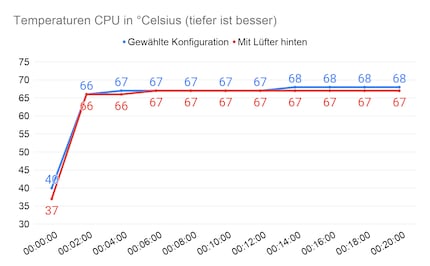
In absolute figures, this means a maximum difference of two degrees Celsius between the fan combination chosen by Jessi and me and the one with a rear exhaust fan. If you look at the temperature curve in the housing, you can see that it flattens out earlier in the configuration with the exhaust fan. After twenty minutes, it is four per cent cooler in the housing.
The maximum two degrees have no effect on the performance of the CPU and GPU: The CPU and GPU clocked the same during both tests. The CPU with around 4.1 GHz on all cores and the GPU with an average of 1500 MHz.
The result of the CPU temperatures stands out. I would have expected them to be the same for both configurations because the radiator is mounted at the front. There is always fresh air coming in from outside through the radiator. The temperature inside the case should therefore have no influence on the CPU temperature. The fan at the rear may draw more fresh air through the radiator, which cools it more efficiently.
Conclusion: An exhaust fan is of little use in this case
The results are roughly what I expected beforehand. The five intake fans create enough positive pressure in the case to dissipate the hot air relatively efficiently. The Corsair case has enough fan slots through which hot air can escape. An exhaust fan doesn't add much, let alone any increase in performance.
Adding more exhaust fans at the top could possibly reduce the temperature in the case even more. However, this will only have a minor effect on the temperatures of the CPU and GPU. The components are already running at the performance limit defined by the manufacturer with the fan combination Jessi and I have chosen.
So the two users were wrong with their tip? Not quite. Exhaust fans can certainly make sense. They are extremely useful for cases that do not work with positive pressure or those that otherwise do not have sufficient airflow. Exhaust fans are also recommended if you want to get the most out of your PC. However, Jessi does not want to overclock the CPU or GPU. In her case, one or more exhaust fans won't improve performance - except for more noise and higher power consumption.
From big data to big brother, Cyborgs to Sci-Fi. All aspects of technology and society fascinate me.
Practical solutions for everyday problems with technology, household hacks and much more.
Show all